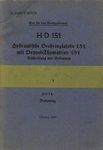I agree the condensers are not invulnerable but since they are 'leaky' holing them does not create an immediate issue as with a pressurized coolant system. However there are a few key points in the system that if hit puts the engine out quickly (main reservoir, piping, and electrical system) A few failed pumps (some sources say 22 inline) are not a major issue as they are centrifugal and flow can still continue albeit at a reduced rate.
There is a reference in Air Enthusiast that states that the two wing root guns could be replace by MG151s but I have not uncovered this in any source docs (If my mount i would choose three MG151/15)
I also tried to run to ground a report that a few He100s went to Norway when the Fw187s went there on service trials. The author of that tried to assert that would account for the Hurricane pilots reporting He113s in the area.
My efforts did not produce any evidence.
There is a reference in Air Enthusiast that states that the two wing root guns could be replace by MG151s but I have not uncovered this in any source docs (If my mount i would choose three MG151/15)
I also tried to run to ground a report that a few He100s went to Norway when the Fw187s went there on service trials. The author of that tried to assert that would account for the Hurricane pilots reporting He113s in the area.
My efforts did not produce any evidence.

